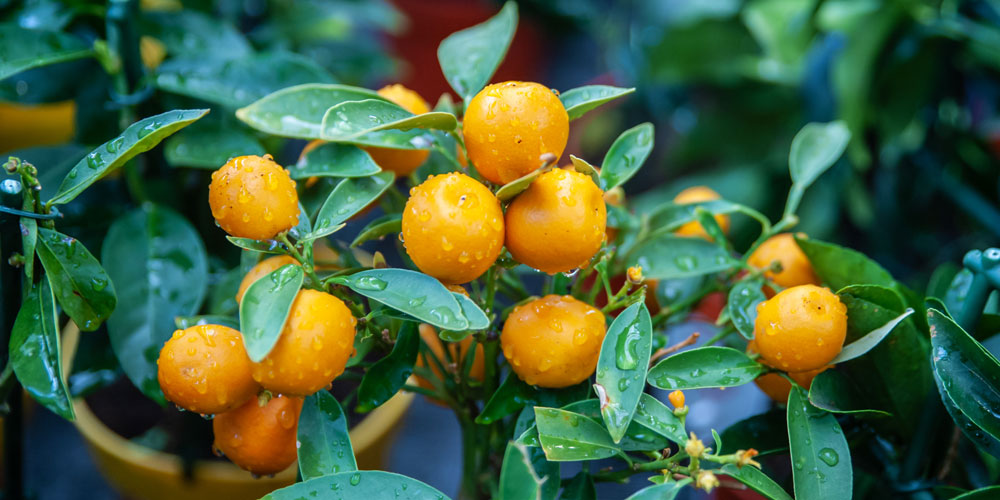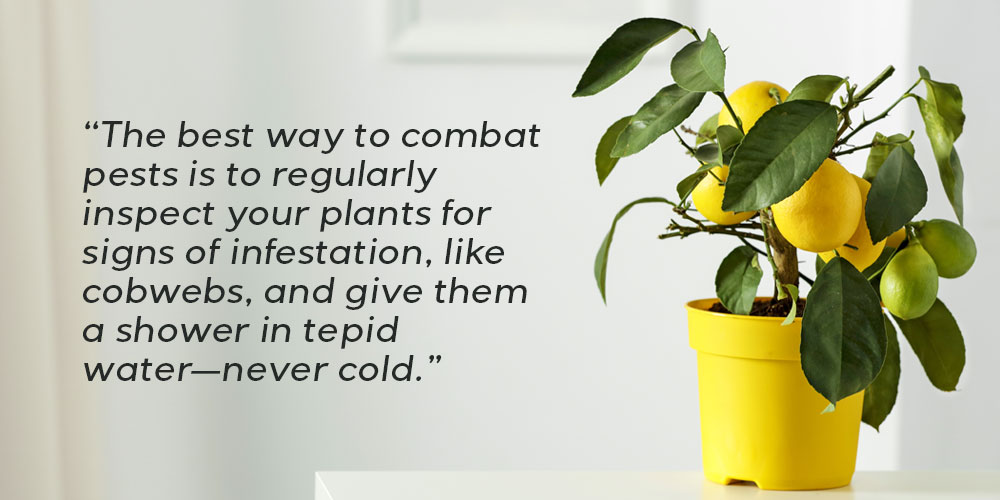Indoor Citrus Care: Common Issues and How to Fix Them
Citrus trees have become very popular recently. Whether it’s oranges, lemons, or limes, there’s nothing quite as refreshing as enjoying fruit that you’ve grown yourself.
Can I Grow a Citrus Tree Indoors?
Many of us Canadians have discovered that we can fairly easily grow some of these yummy tropical fruits as indoor plants.
In general, citrus plants prefer acidic, very well-draining soil, 8-10 hours of sunlight a day, regular showers, and thorough watering. Still, the soil should dry between waterings, temperatures of 65º during the day and 60º at night, fertilization during the growing season, and high humidity.
Citrus care sounds like a lot of work, but it’s honestly not much different from many other plants, except the acidic soil preference. Like most tropical plants, citrus trees have a few idiosyncrasies. These are some issues you might encounter when growing your citrus trees and what you can do about them.

Citrus Care: Too Much Moisture
Citrus trees need soil that drains well and dries reasonably fast. If your citrus plant’s soil is continuously moist, if the leaves are wilting, yellowing, and falling off, or if you have fungus gnats: it might be suffering from too much moisture.
There are a couple of ways to manage this. The first one is to water it less frequently. Overwatering is a common problem houseplants face. You may also want to consider moving your citrus tree into a terra cotta pot with a drainage hole using a potting mix designed for acid-loving plants. Add some organic matter like orchid bark into the mix to promote drainage.
Too Many Nutrients
All plants need nutrients to grow, but too much fertilizer can stress your plants. Overfeeding could cause the edges of the leaves to turn brown and crispy, if it’s dropping leaves, and growing very slowly. Only fertilize your citrus tree between April and September, and use a fertilizer specifically for acid-loving plants, mixed at half the recommended strength.

Light Stress
Citrus plants can suffer from not enough light and too much light. If they don’t get enough sunlight (6-8 hours a day), they may drop green leaves and grow quite slowly. If they get too much light during the winter (12+ hours), they may just stop growing and get weak, like us when we’re sleep-deprived. Citrus plants do need to experience seasonal light changes to stay strong and healthy.
Position your citrus plant in a sunny spot with south sun exposure. You can supplement with grow lights, but don’t leave them on for more than 8-10 hours.
Air Stress
Citrus plants don’t like drafts, extreme temperatures, or low humidity. If the air is too dry or too drafty, the leaf tips may start to brown, and flowers or fruit may drop. Add a humidifier through the winter, and position them somewhere that’s away from drafts, either from furnace vents or doors and windows. The ideal daytime temperature for citrus trees is around 18ºC and 16ºC at night.
Not Enough Moisture
Citrus plants like a thorough soaking, and then being left to dry between waterings, but not for too long. Underwatering can look like water sitting on top of the soil and not soaking in for a long time, or water running right down around the soil and out the bottom of the pot. The soil’s edges pulling away from the pot is also another sign of underwatering, and the leaves may be droopy and crispy.
An important part of citrus care is watering your plants thoroughly with room temperature water when the first inch of soil feels dry. Soak it well until the water runs into the drip tray. Empty the drip tray within an hour of watering to avoid root rot.

Pest Infestations
Common pests on citrus plants include scale, whitefly, and spider mites. The best way to combat pests is to regularly inspect your plants for signs of infestation, like cobwebs, and give them a shower in tepid water—never cold. Spraying your citrus plants off regularly, on the tops and bottoms of leaves, and all the stems are among the most effective ways to combat pest infestations. It’s easy to do this when you water if you take your plant to the sink or shower for watering. It’s best to avoid using pesticides on citrus trees since you’ll want to eat the fruit eventually.
No Fruit
Getting an indoor citrus plant to produce fruit is more challenging than it is for outdoor citrus care. First of all, you’ll have to be patient; it may take until your tree is five years old before it will be mature enough to produce fruit. Once your tree is mature enough to start flowering, you can help the process in a few ways:
- Fertilizing during the growing season.
- Making sure it gets enough sunlight by moving it outdoors for the summer (once temps are above 15º overnight).
- Manually pollinating the flowers.
How do you manually pollinate a citrus tree? Use a paintbrush or toothbrush to gently touch the anthers and collect pollen, and then gently brush it onto the stigma of each flower.
With proper citrus care, you can enjoy these beautiful, edible houseplants for years to come. If you’re lucky and make sure to pollinate the wonderfully scented flowers, you may end up with lemons, limes, or oranges grown right here in Powell River.

